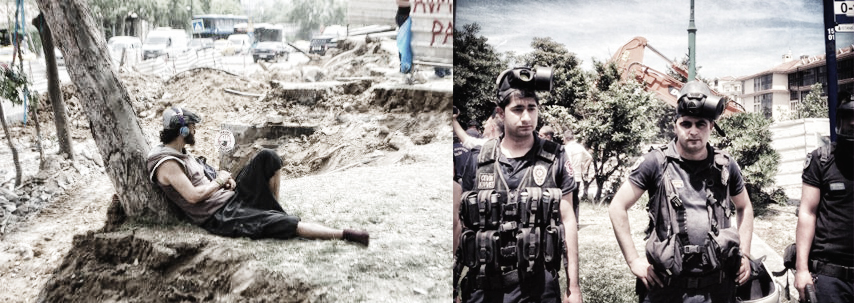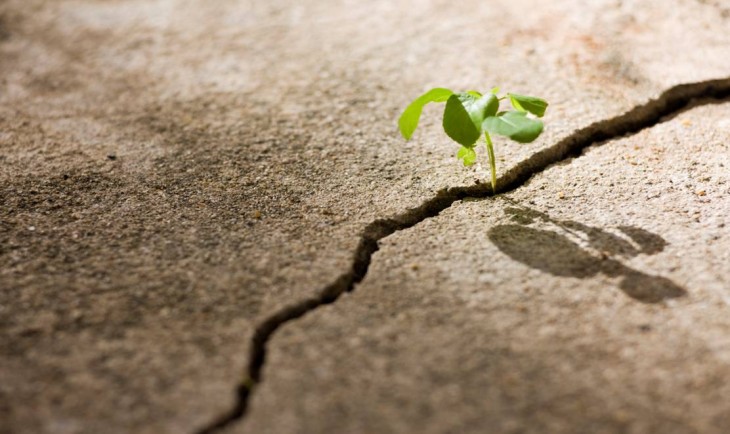 Philippe Rahm, inside the overall debate on an Advanced Architecture, looks back at the configurations of dwellings and cities from the past or from a ‘more present past’ to investigate the relationship between the natural environment and the architectural space, figuring out that the Architecture has always been following the climate changing in its configuration and functions. While the most of the research in Architecture has been stopping looking at the relation between form and function, Philippe Rahm underlines the necessity to see the form and the functions as something derived spontaneously from the climate conditions. Read More
Philippe Rahm, inside the overall debate on an Advanced Architecture, looks back at the configurations of dwellings and cities from the past or from a ‘more present past’ to investigate the relationship between the natural environment and the architectural space, figuring out that the Architecture has always been following the climate changing in its configuration and functions. While the most of the research in Architecture has been stopping looking at the relation between form and function, Philippe Rahm underlines the necessity to see the form and the functions as something derived spontaneously from the climate conditions. Read More
Category Archives: Relational Logic – Critical Readings
the //ArchitectureTechnologyNature// Singularity Point
Architecture as an intent of Accident, Of Roots, Possibilities, and the Spaces in Between
T6-Sou Fujimoto
Of Roots, Possibilities, and the Spaces in Between
Sou Fujimoto’s philosophy is defined that architecture and nature have this space in between – a space for people not to just live in but rather to explore and fulfill it by themselves; a space that creates a natural environment and a metamorphic reaction or movement created by human behavior; a space that mimics and creates a new world merging the soul of nature with the body of architecture, an opposing two that creates that melody and overall sense of the in-between space. Read More
Tarzans in The Media Forest

PROTESTOR GUARDING HIS TREE / POLICEMEN GUARD THE DESTRUCTION
WHAT WE CAN LEARN FROM A PARK
http://en.wikipedia.org/wiki/2013_protests_in_Turkey
Summer of 2013 something happened in Istanbul, the monetary system wanted to take the only green space left in Taksim, the GEZİ PARK, wich was the last public breathing point for the people and the reason to do so was to build a SHOPPING MALL
Like Toyo Ito says, the rapid economical growth was there, trying to reach every corner of the city, every valuable space was being occupied by big “bosses” to be sold. The park was tried to be destroyed with the help of police force. People resisted, the resistance spread to the country, that mall was not built. This shows if people themselves have the respect to the nature, we have a lot to learn from a tree, everything startet with a tree at gezi park but of course had political background.
WHAT WE CAN LEARN FROM A TREE
Toyo Ito mainly focuses on the idea of creating a connection between nature and human living environments “cities”. There is the example of the tree, which can grow vertically but also create harmony with his surroundings and in itself by sharing the sunlight with every leave democratical as neighbours living in harmony. He asks the question why humans today “lost” that connection wich he had with the nature in rural horizontal cities, what did we miss trough the inevitable proccess of going vertical in the city.
Ito runs his office for over 40 years and he talks about the different eras of arcitectural growth of the city, and for him the word city means “Tokyo”. The swimming in the sea of consumption, extreme fast economical changes influence architecture and create almost impossible relationships in the city texture. He and his colleagues ask the same questions in every era, even if rules of the game changes in every 10 years period. Who is the architect, how much an architect can influence the world in this rules and for whom is architecture practiced and how can we learn from the nature.
He accepst and creates an anology with the rules of the game in the human world, in the the ecosystem “the forest”, when if only one tree tries to abstract himself form the system, gets eliminated, as this fight between spiecies creates their harmony. Harmony comes from the constant fight, which fight brought us to live worse. Instead of creating indusry for sustainability, we should simply learn from nature.
Modern times create so called fictional architecture, Ito states, as we architects fix on an image and miss the importance of building creation proccess and humanitary needs also naturality. His own Sendai Mediatheque building period is for him an example of, how reality changes the mind of an architect by time, the end product may vary from the idea or image, but get better qualities after facing reality. The imaginary idea dies, leaving huge amount of construction work behind. However your image is idealised, the building is real.
Architecture and Adaptation
During the ages human beings have been adapting their selves to the different conditions. Nowadays human inhabit the extremes parts of the planet. Many technologies were developed to make it possible, such as air conditioning, heating, etc. This process of adaptation contributed a lot to the problems we are facing now related to energy consumption and sustainability and that is the next step of the humanity adaptation process.
Energy consumption and sustainability are related to many different fields including architecture and its relationship with the nature and environment. The building industry is one of the industries that consumes energy the most and some recent proposals show that a deeply modification of form and function in architecture could reduce the building energy consumption substantially, as Philippe Rahm and Gilles Clément explain in the book “Environment: Approaches for tomorrow”. The idea of the text is that as form and function changes time to time, the goal is to create architecture free of formal and function predeterminations, opened to weather and environmental conditions that could emerge spontaneously in response to climate and other environmental variations. Form and function should follow climate. There are some examples along the history of architecture where environmental aspect were the most import point for their development. Venice for example was conceived as it is because the lack of potable water so that it could catch rainwater and now its spaces function as a focal point for social interaction and the courtyard central to the layout of the desert houses were created mainly because of the need for and outdoor space protected for the sandstorms.
This concept is really interesting and can be applied in different scales, but should not be the only solution. In order to do sustainable architecture there should be a balance between different concepts during design and construction. In order to adapt to this new conditions architecture should be adaptive.



